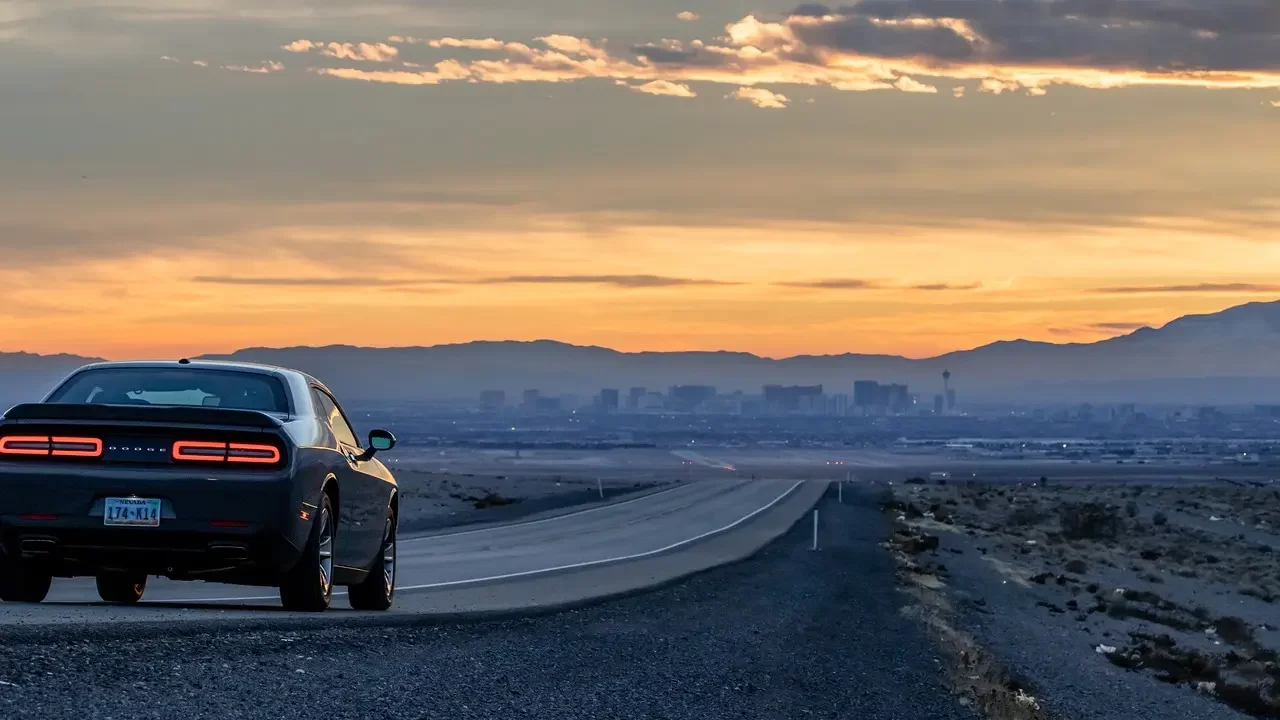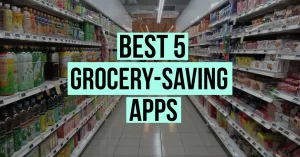Hi friend – The question of how to save money on gas? is a subject for a lot of conversations these days. For good reason, I mean, gasoline money is something we all have in our monthly budgets.
Some of us allocate more money for gas than others but, all car owners have to dedicate a certain amount of income towards it.
That being said, it would definitely be nice if we could save some of that fuel money for other purposes like, grocery shopping for example.
For that reason, I compiled this list of the best tips and practices to help you save money on gas and improve fuel efficiency.
These tips can help you save gas while driving as well as cash on your gas station trips. Whether you drive job vehicles or personal ones will dictate the amount of money you’ll be saving on gas.
So if you refuel often (like people who drive for a living), you’ll obviously end up saving more than say, someone who only drives the car once or twice a week.
That being said, money saved is money earned so let’s get into it!
Tip #1: Use gas-saving apps.
Fueling up might have gotten a bit more affordable lately that it’s came down from the 2022 all-time highs of $5.02 a gallon. But, that’s not to say that it isn’t weighing on our pockets still.
The following are two apps that can help you save some cash at the pump.
GasBuddy App
GasBuddy is an app that tracks gas prices in real time through users input from all over the country. That way, you can check which gas station in your area has the most affordable prices without having to be there. You don’t even need an account, you can just download the app and start checking the prices around your area. And yes, it’s free!
It also has a debit-like card option that you can link to a checking account for cashback rewards in the form of an automatic discount. You do need to create an account and activate deal alerts for that though.
The app is rated 4.7 on app store and 4.6 on play store with over 10 million downloads indicating a general sense of satisfaction among users.
Upside App
Upside is a cashback reward app that claims to have the highest cashback reward rates among its peers. In fact, they report that frequent users average $148 on cash back rewards per year.
Since it’s launched back in 2016, it has partnered with more than 50 000 business including gas stations like Conoco, Chevron, Texaco, RaceTrac, Marathon, Exxon, Circle K and Shell.
To earn cashback, all you have to do is download the app, create an account and claim the offer you want. Once you claim the offer, you can then pay with your credit/debit card or upload the receipt to earn your cashback rewards.
Just note that there is a $1 fee for withdrawing small amounts. That is $1 fee for bank withdrawals that are less than $10 and for PayPal withdrawals that are less than $15. Anything above that, you can withdraw for free.
Tip #2: Maintain your car regularly.

Maintaining your vehicle regularly and ensuring that it doesn’t have any major issues can save you a lot of money down the road on both, repairs and gas mileage. That’s because the smoother the car runs, the more fuel efficient it is.
Upgrade your motor oil
Things like upgrading your motor oil can provide a 1% to 2% increase in fuel economy. Provided you use the manufacturer’s recommended grade of motor oil.
Check your filters
Old, damaged and/or clogged air filters can really compromise fuel efficiency. That’s because the engine needs gas and oxygen in certain proportions to function properly otherwise, it will “suffocate” for lack of enough oxygen.
Check tire pressure
Ensuring your tires are always at optimal pressure can improve gas mileage by up to 3%. You can refer to the vehicle’s handbook for the optimal tire pressure but, for most passenger cars that number is between 31 and 35 PSI.
On top of improving safety while driving, having your tires pressure in check will also make them last longer. So it helps to keep a portable tire inflator handy.
Act on check engine light
The malfunction indicator light (MIL) on the dashboard signifies that there is something wrong with the engine. It could be something as minor as a loose gas cap or, a more serious issue that could affect your mileage negatively and may also call for costly repairs down the line. Either way, it is best to not ignore the warning and act on it as soon as possible. Having a diagnostic scanner tool can be useful in letting you know what is it that’s causing the issue.
Tip #3: Avoid heavy loads

Additional unnecessary weights in your car can account for a significant increase in overall fuel consumption. In fact, studies show that for every 100 kg (220.5 lbs.) of reduced weight we could benefit from a fuel consumption decrease of 0.4 L/100 Km for cars and 0.5 L/100 Km for light trucks. That’s around 0.11 – 0.13 gal for every 62 miles.
Given that the average person in the US drives an annual distance of around 13 476 Miles, that could add up to be 23+ gallons a year.
How much weight will you be able to shave off a car depends entirely on how far you’re willing to go. The following are some of the ways you can reduce the weight of your car:
- Remove spare parts from the trunk (examples include tool kits, carpets and a spare wheels)
- Remove roof racks
- Remove back seats entirely if you don’t need them
- Replace factory seats with lighter ones like Racing bucket seats
- Remove the air condition and heating system
- Remove the radio and speakers (I know, it’s just a loud moving box at this point ha-ha)
If that’s too much to consider, you can start by decluttering your car and only carrying essentials.
Tip #4: Improve your driving techniques

The amount of fuel your car consumes is also influenced by the way you drive. In fact, an MIT analysis shows that aggressive driving like speeding, rapid acceleration and abrupt deceleration/braking, can decrease fuel economy by 15% to 30% at highway speeds and 10% to 40% in stop-and-go traffic. Therefore, it only makes sense to improve those driving skills by implementing these fuel-efficient driving tips.
- Avoid unnecessary idling: If you don’t expect to move for within 3 min, turn off the car. As long as you’re not in traffic. The average 3-liter engine vehicle wastes around 300 milliliters of fuel for every 10 min of idling.
- Accelerate gently: Aggressive acceleration tends to consume more fuel. Especially when followed with a deceleration that renders most of the momentum useless.So make sure to accelerate smoothly. Don’t spill your coffee!
- Maintain a steady speed: Steady speed allows your engine to run more efficiently. It is also shown to reduce fuel consumption.
- Anticipate traffic: Anticipating traffic allows you to take full advantage of the acceleration momentum
- Avoid high speeds: The relationship between speed and fuel consumption can be depicted in a U-shaped chart curve. With the most fuel-efficient speed sitting between 50 – 80 km per hour (31 – 50 mph). After that, vehicles tend to use increasingly more gas the faster they go. For example, going from 100 km/h to 120 km/h uses 20% more fuel. So, it helps to ease off the gas a little bit and, maintain that optimal speed of 50 to 80 km/h or 31 – 50 mph.
Tip #5: Plan your trips ahead of time

Planning your route ahead of time allows you to avoid high traffic areas like construction sites, major intersections, pedestrians and stop-and-go driving spots. You should also avoid routes that cross through major cities when traveling long distances.
Another way to Eco-drive is to combine your trips when running errands in order to avoid backtracking.
For example, if you have to drop your child at a violin lesson, you can get by the supermarket for some groceries and pick-up the dry cleaning on the way.
That way you don’t have to go back and forth between all the tasks which allows for less driving time. Therefore, less fuel consumption.
The best way to achieve that is to plan your day ahead of time. Which is also great for productivity, and overcoming potential procrastination.
Final thoughts
The key to saving money on gas, or any other expense for that matter, is to combine little tips and apply them together for a long enough period of time.
That’s when you can really see the impact of your efforts.
For example, say you start using apps to save a couple cents at the pump here and there while simultaneously maintaining your car, avoiding heavy loads, optimizing your driving skills, and planning your routes to maximize fuel efficiency.
Applying any of these tips separately may not yield substantial results but, combining them, over time, is likely to be of value when it comes to saving some cash on fuel and improving mileage.
Therefore, it is important to stick to these practices in conjunction with one another for best results.
With that, I’ll have finished my thoughts on this subject.
I hope you found this helpful and of value.
If you did, please consider sharing it with people who might need it.
Thank you so much for reading this far. It means a lot, appreciate it!

